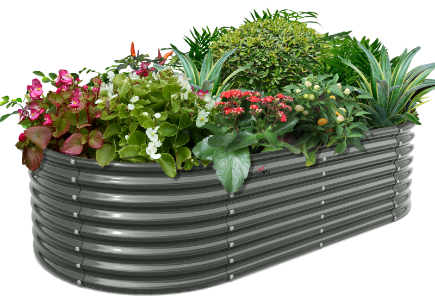-
 Find in Members
Find in Members Find in Videos
Find in Videos Find in Channels
Find in Channels
This website uses cookies to ensure you get the best experience on our website.
To learn more about our privacy policy Click herePrivacy Preference
- Tags - #BLOG
-
- Last updated December 1, 2024 0 comments, 95 views, 0 likes
More in Politics
Related Blogs
Archives
The Ultimate Guide to Building Your Own Raised Garden Bed: Materials, Design, and Tips
Body
Creating a raised garden bed can transform your gardening experience, offering numerous benefits such as improved drainage, better soil quality, and easier access for planting and harvesting. This guide will delve into the essential aspects of building your own raised garden bed, including materials, design considerations, and helpful tips to ensure your gardening success.

Understanding the Benefits of a Raised Garden Bed
Why should you consider a raised garden bed? Here are some compelling reasons:
- Enhanced Drainage: Raised beds allow excess water to drain away, preventing root rot.
- Improved Soil Quality: You can control the soil mix, ensuring optimal conditions for your plants.
- Accessibility: Elevated beds reduce the need to bend over, making gardening easier on your back.
- Pest Control: Raised beds can deter certain pests and make it easier to manage weeds.
Choosing the Right Materials for Your Raised Garden Bed
When constructing a raised garden bed, selecting the right materials is crucial. Common options include:
- Wood: Cedar and redwood are popular choices due to their natural resistance to decay.
- Metal: Galvanized steel offers durability and a modern aesthetic. Check out
 for high-quality options.
for high-quality options. - Concrete Blocks: These provide a sturdy structure and can be arranged in various designs.
- Bricks: A classic choice that allows for creative designs and good drainage.
Designing Your Raised Garden Bed
What dimensions should your raised garden bed have? The size can vary based on your available space and the types of plants you wish to grow. Here are some design tips:
- Height: A height of 12 to 24 inches is ideal for most vegetables.
- Width: Keep the width to about 4 feet to allow easy access from both sides.
- Length: Length can vary, but 6 to 8 feet is common for easy maintenance.
Essential Tips for Maintaining Your Raised Garden Bed
Once your raised garden bed is built, maintaining it is key to a successful garden. Here are some tips:
- Watering: Ensure consistent moisture, especially during dry spells.
- Soil Management: Regularly amend the soil with organic matter to maintain fertility.
- Pest Monitoring: Keep an eye out for pests and diseases, and act quickly if issues arise.
In conclusion, building a raised garden bed is a rewarding project that can enhance your gardening experience. By understanding the benefits, choosing the right materials, designing effectively, and maintaining your bed, you can create a thriving garden that brings joy and sustenance for years to come.








Comments